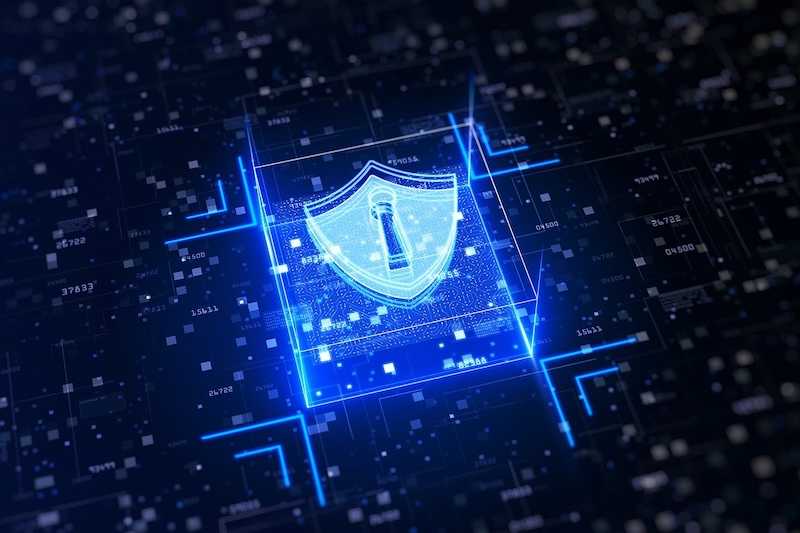Let’s be honest: every aspect of our lives today is connected through smartphones, computers, and the internet. That’s the reason why cybersecurity has become more critical than ever: from protecting personal emails and banking details to safeguarding national infrastructure. Yet, despite its importance, cybersecurity remains a topic many people misunderstand or underestimate.
This article aims to provide a comprehensive overview of what every individual, regardless of their technical background, should know about cybersecurity. We’ll explore the basics, why it matters, common threats, practical protection tips, and how both individuals and organizations can contribute to a safer digital environment.
What is Cybersecurity?

Cybersecurity refers to the practice of protecting systems, networks, programs, and data from digital attacks. These cyberattacks are often aimed at accessing, changing, or destroying sensitive information, extorting money, or disrupting normal business operations. Cybersecurity involves a combination of technologies, processes, and practices designed to guard against unauthorized access and digital threats.
The three primary goals of cybersecurity, often referred to as the CIA triad, are:
- Confidentiality: Ensuring information is accessible only to those authorized to view it.
- Integrity: Ensuring data is accurate and unaltered.
- Availability: Ensuring systems and data are accessible when needed.
Every individual and organization is a potential target for cybercriminals, making it crucial to understand why cybersecurity matters and how it influences nearly every facet of our connected lives.
Why Cybersecurity Matters
At the individual level, one of the most immediate concerns is the protection of personal information. With more people storing sensitive data such as Social Security numbers, banking details, and private communications online, cybercriminals are constantly seeking ways to exploit these vulnerabilities for identity theft and fraud. A single successful breach can wreak havoc on a person’s financial stability and personal security, often taking months or even years to resolve.
For businesses, cybersecurity is not just an IT concern—it’s a critical aspect of operational continuity. A well-executed cyberattack can disrupt services, halt production, and expose customer or proprietary data, resulting in significant financial losses and long-term reputational damage. In many cases, the aftermath of a security incident can be more damaging than the attack itself, especially if the organization is unprepared or slow to respond.
Government systems are also prime targets for cyberattacks. These attacks can pose serious national security risks, potentially compromising sensitive defense information or disrupting essential public services. Ensuring the cybersecurity of these systems is not just a matter of protecting data—it’s about safeguarding public trust and safety.
Beyond these immediate implications, cybercrime is a massive economic issue. It’s estimated that global cybercrime costs run into the billions annually, affecting businesses of all sizes and sectors. In this challenging environment, partnering with a reliable cybersecurity services provider has become a strategic necessity. Such providers offer expertise, tools, and proactive strategies to defend against emerging threats, ensuring that both individuals and organizations are better equipped to navigate the digital world safely.
Common Cybersecurity Threats
Understanding the types of cyber threats is essential to recognizing risks and responding appropriately. Some of the most common threats include:
- Malware: Malicious software such as viruses, trojans, and ransomware that damage or disrupt systems.
- Phishing: Deceptive messages designed to trick users into revealing sensitive information or downloading harmful software.
- Man-in-the-Middle Attacks: Cybercriminals intercept communication between two parties to steal data or manipulate interactions.
- Denial-of-Service (DoS) Attacks: Overloading a system or network to render it unusable.
- Zero-Day Exploits: Attacks that occur on the same day a weakness is discovered in software, before a fix is available.
- Insider Threats: Risks posed by individuals within an organization who have access to sensitive systems or data.
Cyber Hygiene: Best Practices for Individuals
Cyber hygiene refers to the routine practices and precautions users should follow to maintain system health and improve security. Here are essential tips:
- Use Strong Passwords: Avoid simple or reused passwords. Use a combination of letters, numbers, and symbols, or consider a password manager.
- Enable Two-Factor Authentication (2FA): Adds an extra layer of security beyond just a password.
- Keep Software Updated: Regular updates patch security vulnerabilities.
- Be Cautious of Emails and Links: Don’t open attachments or click on links from unknown or suspicious sources.
- Install Antivirus and Antimalware: Use trusted security software to detect and remove threats.
- Secure Wi-Fi Networks: Use strong passwords and encryption for home and public Wi-Fi.
- Back Up Data Regularly: Ensure important files are backed up in case of ransomware or system failure.
Cybersecurity for Children and Families
Children are increasingly exposed to the digital world, often before they fully understand the risks. Parents and guardians should take proactive steps:
- Use Parental Controls: Restrict access to inappropriate content and monitor screen time.
- Educate About Online Behavior: Teach kids not to share personal information or interact with strangers online.
- Lead by Example: Practice good cyber hygiene so children can model those behaviors.
- Use Kid-Friendly Browsers and Apps: Choose platforms designed with child safety in mind.
Family conversations about online safety should be ongoing and age-appropriate.
How Businesses Can Strengthen Cybersecurity
Businesses today face a more complex and aggressive threat landscape than ever before. With cyberattacks growing in both frequency and sophistication, organizations—regardless of size or industry—must implement robust cybersecurity strategies to protect their digital environments. Strengthening cybersecurity isn’t solely about deploying advanced technologies; it also involves cultivating awareness, adopting best practices, and ensuring every layer of the organization is prepared to defend against potential threats.
One of the foundational steps in improving cybersecurity is educating employees. Staff often serve as the first line of defense, and targeted training helps them recognize phishing scams, avoid unsafe downloads, and understand the importance of secure data handling. When employees are aware and vigilant, they can prevent many threats before they cause harm.
Equally important is controlling access to sensitive information. By implementing role-based access systems, businesses can ensure that only authorized personnel have the ability to view or modify critical data. This minimizes the risk of internal breaches and reduces the exposure of valuable assets. Securing the organization’s network infrastructure is another critical focus area. Firewalls, VPNs, and intrusion detection systems provide continuous monitoring and protection against unauthorized access or suspicious activity. They serve as digital gatekeepers, helping organizations spot and neutralize threats in real time.
In the event that a breach does occur, having a clear incident response plan is vital. This structured approach allows teams to react quickly, contain the breach, assess the damage, and restore normal operations with minimal downtime. Regular audits are also essential. By reviewing systems and protocols on a scheduled basis, businesses can identify and fix vulnerabilities before they are exploited. These audits help maintain a proactive security posture.
Data encryption ensures that sensitive information remains protected during storage and transmission, making it unreadable to unauthorized users. Additionally, as many businesses rely on third-party vendors, strong vendor management practices are necessary to ensure partners uphold rigorous cybersecurity standards. Interestingly, companies known for delivering high-quality ecommerce solutions—such as some of the top Hyvä theme development companies—often embody many of these best practices themselves. Their expertise in creating secure, scalable, and efficient digital environments makes them well-positioned to guide businesses not only in ecommerce design but also in adopting robust cybersecurity protocols. This alignment underscores how deeply interconnected cybersecurity is with every facet of modern digital operations.
Emerging Trends in Cybersecurity
The field of cybersecurity is continuously evolving to keep up with new threats and technologies. Notable trends include:
- Artificial Intelligence (AI): AI is being used to detect anomalies, predict threats, and automate responses.
- Zero Trust Architecture: A model that assumes no user or device is trustworthy until verified.
- Cloud Security: With more services in the cloud, securing data outside traditional perimeters is crucial.
- IoT Security: Protecting connected devices from vulnerabilities that could be exploited.
- Cybersecurity Skills Shortage: The demand for trained professionals far exceeds supply, creating a talent gap.
Final Thoughts Regarding Modern Cybersecurity
Cybersecurity is not just a concern for IT professionals or large corporations—it is an essential aspect of modern life that affects everyone. Whether you’re checking your bank account online, working remotely, or simply browsing social media, you are engaging with systems that need to be protected.
By understanding the fundamentals of cybersecurity, recognizing common threats, and adopting safe digital practices, individuals can significantly reduce their vulnerability. For businesses and governments, building resilient systems and fostering a culture of security is key to safeguarding information and infrastructure.
As technology continues to evolve, staying informed and proactive about cybersecurity is the best defense in an increasingly connected world.
Disclosure: We might earn commission from qualifying purchases. The commission help keep the rest of my content free, so thank you!



